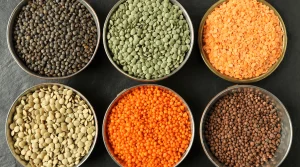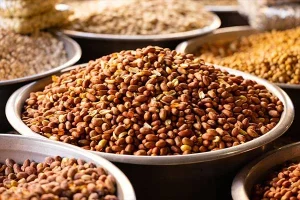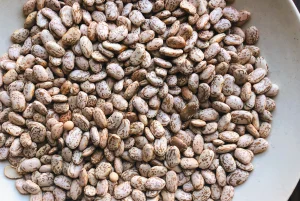
HEALTHIEST LEGUMES
Healthiest legumes. Legumes are either the fruit or seeds of plants in the Fabaceae also known as Leguminosae family. The seeds are also known as pulses when they are consumed as a dry grain. In agriculture, legumes are cultivated mainly for human use but also as silage, livestock feed, and green manure to improve soil.
HEALTHIEST LEGUMES
A simple dry fruit that grows from a simple carpel and typically dehisces (opens along a seam) on two sides is a botanically unique fruit produced by legumes. Any edible portion of a plant belonging to the Leguminosae or Fabaceae family, including the pods, stems, and leaves, can be referred to as a legume. As such, it’s a varied group that contains a number of well-known vegetables, such as beans and peas, and it’s a fantastic source of plant based protein.
1. Lentils

One of the legumes with the highest iron content is Lentils. The production of hemoglobin, a blood protein that carries oxygen, requires iron, a trace mineral. Since vegans and vegetarians may be more susceptible to iron deficiency anemia, using lentils in meals to improve iron intake may be very beneficial for them. Additionally, lentils can lower blood sugar. When compared to eating rice or potatoes alone, consuming half as many carbohydrates from cooked lentils at a meal significantly reduced post-meal blood sugar levels in a research involving 48 healthy adults.
2. Peas

The high-quality protein, fiber, minerals, and antioxidant found in peas support intestinal health and blood sugar regulation, among other health advantages. Vitamin K, a fat-soluble vitamin essential for healthy bones and appropriate blood coagulation, is especially abundant in peas. They include a good amount of protein as well. Numerous studies have demonstrated the potential advantages of pea protein, which is frequently added to meals or taken as a supplement. When coupled with high-intensity interval training, pea protein may aid in the growth and development of muscles. The muscle growth linked to pea protein was similar to that of whey protein.
3. Peanuts

Also, peanuts’ high monounsaturated fat content offers a number of health advantages, particularly when used in place of other dietary components. Eating peanuts has been linked to a lower risk of death from a number of reasons, including diabetes, cancer, heart disease, and stroke, according to a few major observational studies. Curiously, peanut butter doesn’t appear to have the same advantages. But since these studies are merely observational, they are unable to demonstrate that consuming peanuts lowers these risks.
4. Pinto beans

Meanwhile, pinto beans, being high in fiber, have the potential to support intestinal health. According to one study, giving mice pinto beans as a supplement to their diet enhanced the number of gut bacteria that produce health-promoting short chain fatty acids and compounds that guard against insulin resistance. Additionally, some of the chemicals found in pinto beans may lower blood cholesterol. According to a hamster study, pinto beans reduced the amount of cholesterol produced by the liver and absorbed via the intestines.
5. Soybeans

Antioxidants called isoflavones, which are abundant in soybeans, are the cause of numerous health advantages. Consuming soybeans and their isoflavones may lower the risk of developing cancer, according to evidence. Many of these studies, however, are observational, which means that the individuals’ diets were not regulated to allow for the influence of other variables on cancer risk.
Summary
Dietary fiber, protein, B vitamins, and numerous other essential vitamins and minerals can all be found in abundance in beans and legumes. According to some research, they may improve heart health, lower blood sugar, and preserve intestinal function. For a healthy vegetarian dinner, you can eat them by themselves or add them to soups, stews, and salads.